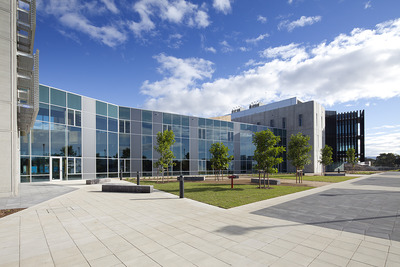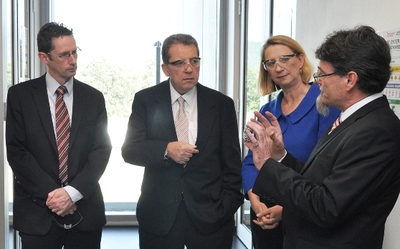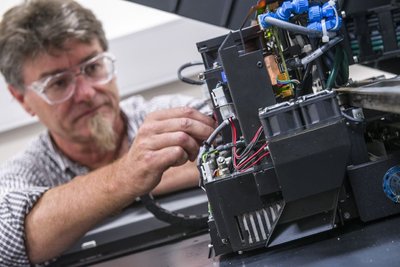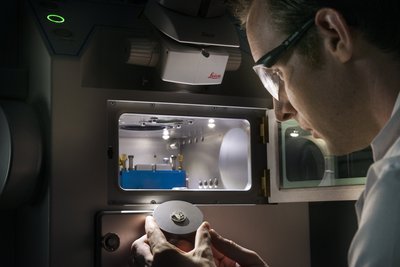From additive fabrication to commercialisation
Thursday, 28 February, 2013
The Australian Institute for Innovative Materials, located at the University of Wollongong’s Innovation Campus, now includes a $47 million processing and devices facility to help bridge the gaps between research breakthroughs, prototyping and commercialisation. According to the university’s Deputy Vice-Chancellor (Research) Professor Judy Raper, no other university in Australia is making this link.

Officially opened in October 2012, the building is home to the Intelligent Polymer Research Institute (IPRI) and Institute for Superconducting & Electronic Materials (ISEM) - which are part of the ARC Centre of Excellence for Electromaterials Science (ACES) - plus an electron microscopy facility. The IPRI focuses on additive fabrication and biofabrication, ie, building 3D structures by printing one layer at a time. This technique means you can add components and materials throughout the structure where you want them; in biofabrication, these components are things like living cells.
Professor Gordon Wallace is Executive Director of ACES and Director of the IPRI. He and his team only had a fundamental research building before the processing and devices facility, which he says has made a huge difference.
“We now have state-of-the-art additive fabrication equipment, or 3D printers,” he said. “We also have a range of customised 3D printers that have been created for us by the manufacturers. In fact, some of our printing technology has been actually designed and developed in-house.
“The fabrication equipment enables us to create material structures, as well as to design experimental protocols and explore fundamental properties that weren’t available to us before.
“We’ve been able to make advances in the past 12 months that we’d not even considered before the machinery was in place.”

Such advances are being made constantly, with 10 to 20 projects on additive biofabrication being conducted at any one time. These range from creating components to whole structures and include work on cartilage, nerve and muscle regeneration, and implants to manage epilepsy and glaucoma.
In fact, with so much interest in this field, it might not be long until a bigger facility is sought, with Professor Wallace admitting that the number of opportunities for projects is beginning to outgrow the number of personnel and fabrication machines available.
“There’s no shortage of projects,” he said.


Professor Wallace stressed that it is not just the equipment that makes the facility such a great place but the people who have come there from around the world - “young people who are leaders in their respective fields” who, he claims, are the real reason behind the facility’s success.
ACES is currently running its Fab Fellow Initiative, which encourages people with industry experience to come to the laboratory and be exposed to its fabrication and manufacturing technologies. It is hoped that these visitors will help to take such methods to an industrial environment.
“I think the facility will provide the catalyst and the nucleus to bring together the right groups of people in order to maximise the possibility of commercial development,” said Professor Wallace.
Best practices for safe centrifugation in the laboratory
The majority of all centrifuge accidents are understood to result from user error. These tips...
Nature-inspired filtration system recovers critical resources
A filtration system that can recover untapped critical resources such as copper and lithium from...
Optimising food and beverage testing with laboratory equipment
In the food and beverage industry, laboratories must balance precision, speed and compliance to...





